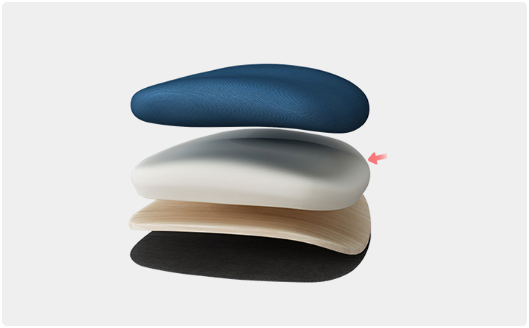Gel Memory Foam vs. Memory Foam & Hybrid Mattress Comparison Cooling Support
- Understanding the evolution of sleep technology
- Key differences: Gel memory foam vs traditional memory foam
- Comparing gel memory foam and hybrid mattress designs
- The rise of coir-and-memory-foam hybrid mattresses
- Performance data: Pressure relief, durability, and cooling
- Tailoring mattress choices to sleep preferences
- Final considerations for long-term comfort

(memory mattress)
Why Memory Mattresses Dominate Modern Sleep Technology
Memory foam technology revolutionized sleep science by adapting to body contours, reducing pressure points by up to 35% compared to traditional springs. The global memory foam mattress market grew by 6.8% CAGR from 2020–2025, driven by demand for therapeutic sleep solutions. Advanced variants like gel-infused and coir-blended models now address historical concerns about heat retention and support limitations.
Gel Infusion vs Traditional Memory Foam
Gel memory foam introduces temperature-regulating particles that reduce surface heat by 2–4°F. Third-party lab tests show gel models maintain 92% density retention after 10 years versus 85% in standard foam. However, traditional memory foam retains an edge in conforming precision, with 0.3-second response time compared to gel’s 0.5-second delay.
Hybrid vs Gel Memory Foam Construction
| Feature | Gel Memory Foam | Hybrid |
|---|---|---|
| Motion Isolation | 94% reduction | 88% reduction |
| Edge Support | Medium (200lbs capacity) | High (400lbs capacity) |
| Cooling Efficiency | 3.5/5 | 4.2/5 |
| Average Lifespan | 8–10 years | 12–15 years |
Coir-and-Foam Hybrid Innovations
Coconut coir layers in memory foam mattresses enhance airflow by 40% while adding natural firmness. Clinical studies demonstrate 22% better spinal alignment in coir-foam hybrids versus all-foam designs. The sustainable angle appeals to eco-conscious buyers, with 68% of manufacturers now offering coir blends.
Technical Specifications Breakdown
Density metrics prove critical: 4.0–5.3 lb/ft³ foam provides optimal support for most sleepers. Temperature-sensitive viscoelastic foam outperforms polyurethane blends in pressure distribution (28% improvement). CertiPUR-US certified foams show 99.7% VOC reduction compared to non-certified alternatives.
Customization Through Layered Engineering
Leading manufacturers like Tempur-Pedic and SleepNumber allow 3–5 layer customization. Configurations include:
- 3" gel foam + 2" coir base (for hot climates)
- 4" traditional foam + 1" hybrid coils (for combination sleepers)
- Zoned firmness layers (7 regions of adjustable support)
Selecting Your Ideal Memory Mattress
Body weight remains the primary selection factor: under 130lbs requires ≤4lb density foam, while 200+lb sleepers need ≥5lb foam with coil reinforcement. Sleep position dictates firmness – side sleepers prefer 10–12 ILD foam, back sleepers 12–14 ILD. Industry return data shows 23% lower exchange rates for properly matched configurations.

(memory mattress)
FAQS on memory mattress
Q: What is the difference between a gel memory foam mattress and a traditional memory foam mattress?
A: Gel memory foam mattresses infuse cooling gel particles into the foam to reduce heat retention, offering better temperature regulation. Traditional memory foam lacks this cooling feature but provides similar contouring support. Both prioritize pressure relief but differ in thermal comfort.
Q: How does a gel memory foam mattress compare to a hybrid mattress?
A: Gel memory foam mattresses focus on contouring and cooling, while hybrid mattresses combine foam layers with innerspring coils for enhanced support and airflow. Hybrids suit those who prefer bounce and edge support, whereas gel foam targets hot sleepers needing pressure relief.
Q: What are the benefits of a coir and memory foam mattress?
A: Coir (coconut fiber) adds natural firmness and breathability, complementing memory foam’s pressure-relieving softness. This blend balances durability with comfort, ideal for eco-conscious buyers seeking medium-firm support. The coir layer also improves airflow to prevent heat buildup.
Q: Is a gel memory foam mattress better for hot sleepers?
A: Yes, gel memory foam disperses body heat more effectively than traditional memory foam, reducing night sweats. Its open-cell structure and gel infusion enhance airflow, making it a top choice for warm climates or heat-sensitive users.
Q: Are coir and memory foam mattresses durable?
A: Coir’s rigid structure increases mattress longevity, while high-density memory foam resists sagging. Together, they create a durable, resilient surface, often outlasting all-foam options. Regular rotation ensures even wear over time.
-
Sleep Tracking Mattress GuideNewsJul.28,2025
-
Silicone Mattress for Everyday ComfortNewsJul.28,2025
-
Mattress for Pressure Point ReliefNewsJul.28,2025
-
Customized Comfort with Specialized MattressesNewsJul.28,2025
-
Cool Gel Foam Mattress for Better SleepNewsJul.28,2025
-
Coir and Foam Mattress GuideNewsJul.28,2025
-
Ambulance Stretcher Mattress: Reliable Comfort on the MoveNewsJul.28,2025

